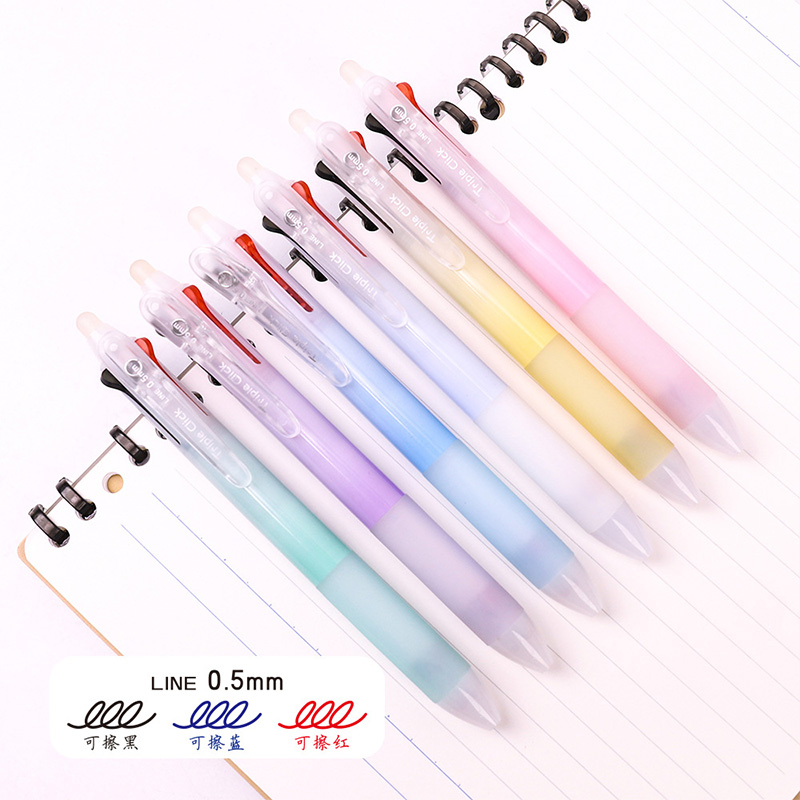In a world increasingly driven by digital interaction, the appeal of a well-made, smooth-writing pen remains surprisingly strong. Among the many options available, gel pens have carved out a distinctive niche—blending the vibrant color of liquid ink with the control and precision of a traditional pen. As handwriting reclaims its space in education, journaling, legal documentation, and artistic expression, gel pens are gaining recognition not only for their bold aesthetics but also for their long-term durability, smooth performance, and adaptability.
Once considered specialty stationery, gel pens have evolved into everyday essentials across a variety of sectors. With technological advancements in ink formulation, tip engineering, and pen body design, they now represent one of the dynamic categories in the global writing instruments industry.
Why Gel Pens Continue to Win Over New Markets
At their core, gel pens offer a tactile experience that many users find irreplaceable. The ink used in gel pens is a pigment-based, water-based formula that creates thick, rich lines. Unlike oil-based inks used in ballpoints or dye-based rollerballs, gel ink is opaque and vibrant, making it especially suited for high-contrast and highly legible writing.
The smoothness of the writing experience—combined with a quick-drying surface—makes gel pens ideal for note-taking, signature writing, form filling, and precision sketching. Professionals who rely on visual communication, such as architects, designers, and educators, often favor gel pens for their ability to produce consistent, high-impact results with little effort.
Stronghold in the Education and Office Sectors
In academic settings, gel pens have become increasingly popular among students and teachers alike. Their bold lines help with note clarity, which can aid in comprehension and retention. For left-handed users, the newer generation of fast-drying gel ink drastically reduces smudging, making gel pens a tool over other pen types.

In office environments, gel pens offer a balance between professional appearance and comfort. Documents filled out with gel pens maintain their clarity over time, making them suitable for internal record-keeping, client communications, and any application where legibility and permanence matter. Legal professionals and executives often turn to archival-grade gel pens to ensure documents remain readable for decades.
Artistic Utility and Creative Trends
One of the fastest-growing markets for gel pens is in arts and crafts. From scrapbooking and calligraphy to bullet journaling and coloring, gel pens offer artists a wide color palette and the ability to write or draw on dark and non-traditional surfaces such as black paper, plastic, wood, or glossy cards.
Metallic, pastel, glitter, and neon gel pens have given creative professionals and hobbyists the freedom to add expressive, decorative elements to their work with precision. The fine-tipped variants allow for intricate detail work that is often difficult to achieve with other ink tools.
The popularity of creative journaling on platforms like Instagram, Pinterest, and YouTube has helped fuel demand for specialty gel pens, encouraging manufacturers to release themed sets and limited-edition color collections tailored to specific hobbies or design aesthetics.
Technical Improvements in Ink and Pen Design
Recent innovations have significantly improved the durability, flow control, and fade resistance of gel ink. High-quality gel pens now incorporate pigment-based inks that are UV-resistant and waterproof, qualities previously in non-ballpoint pens. These improvements make gel pens an increasingly attractive option for archival work, official documentation, and long-term writing needs.
Additionally, pen makers are refining tip designs to enhance ink flow and reduce clogging, ensuring a smooth glide even during long writing sessions. Many new models feature cushioned or precision tips, offering a writing experience that combines comfort with performance.
The pen bodies themselves are also evolving, with ergonomic grips, refillable cartridges, and minimalistic designs aimed at both sustainability and user satisfaction.
Sustainability and Eco-Conscious Choices
With consumer focus shifting toward eco-responsibility, gel pen manufacturers are responding by offering refillable options and pens constructed from recycled plastics or biodegradable materials. Retailers and corporate buyers are increasingly seeking out gel pens that align with environmental goals, making green packaging and product labeling more prominent across brands.
While disposable gel pens remain common, many companies are now offering universal refills to extend product life and reduce waste. These efforts not only contribute to sustainability but also appeal to cost-conscious consumers seeking long-term value.